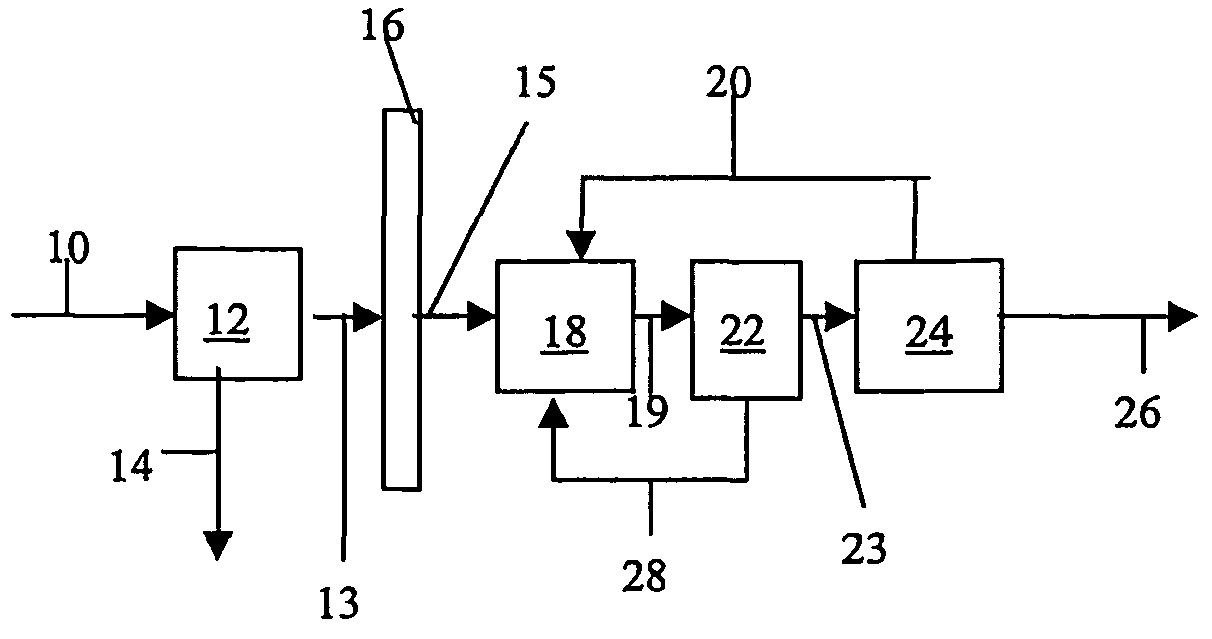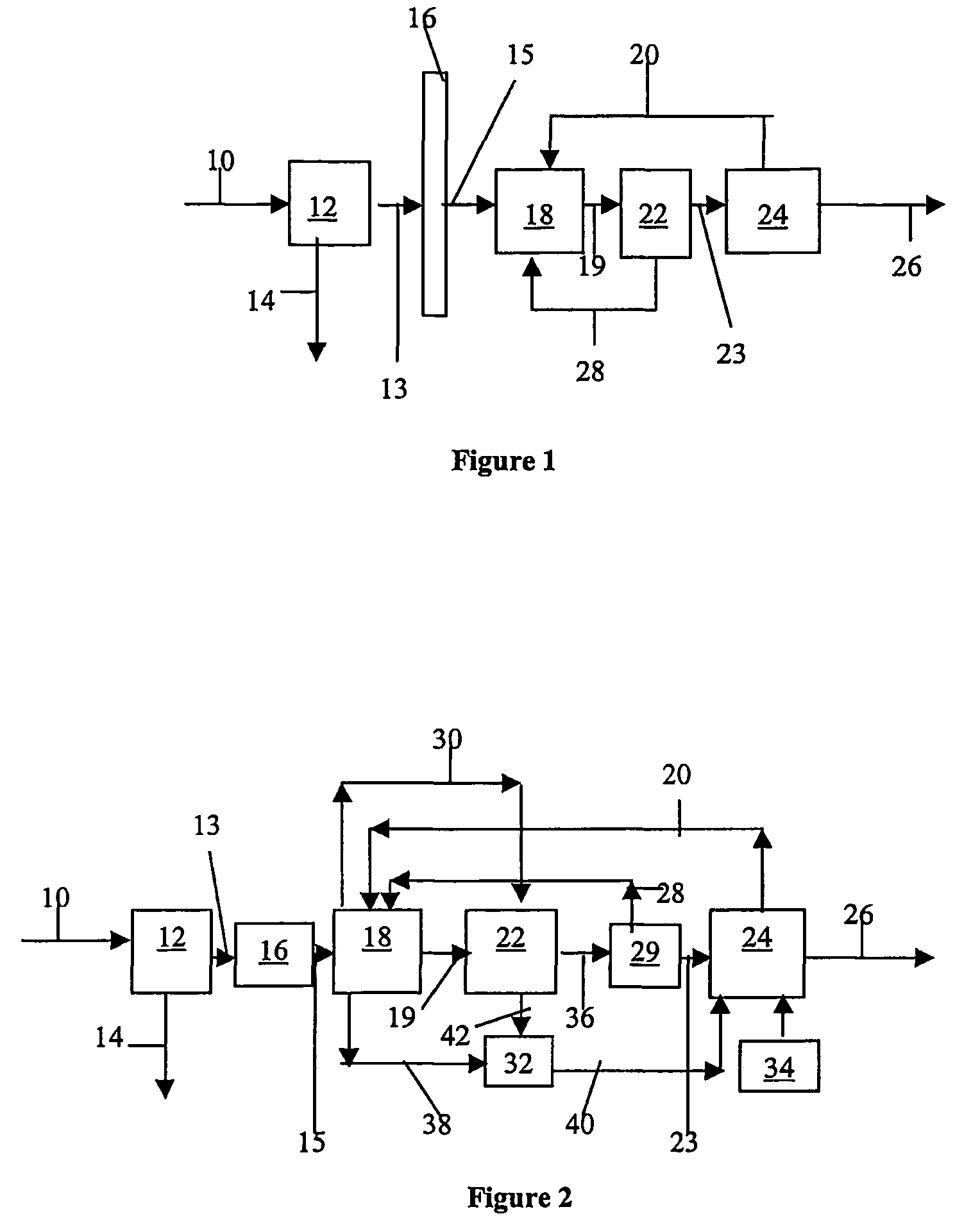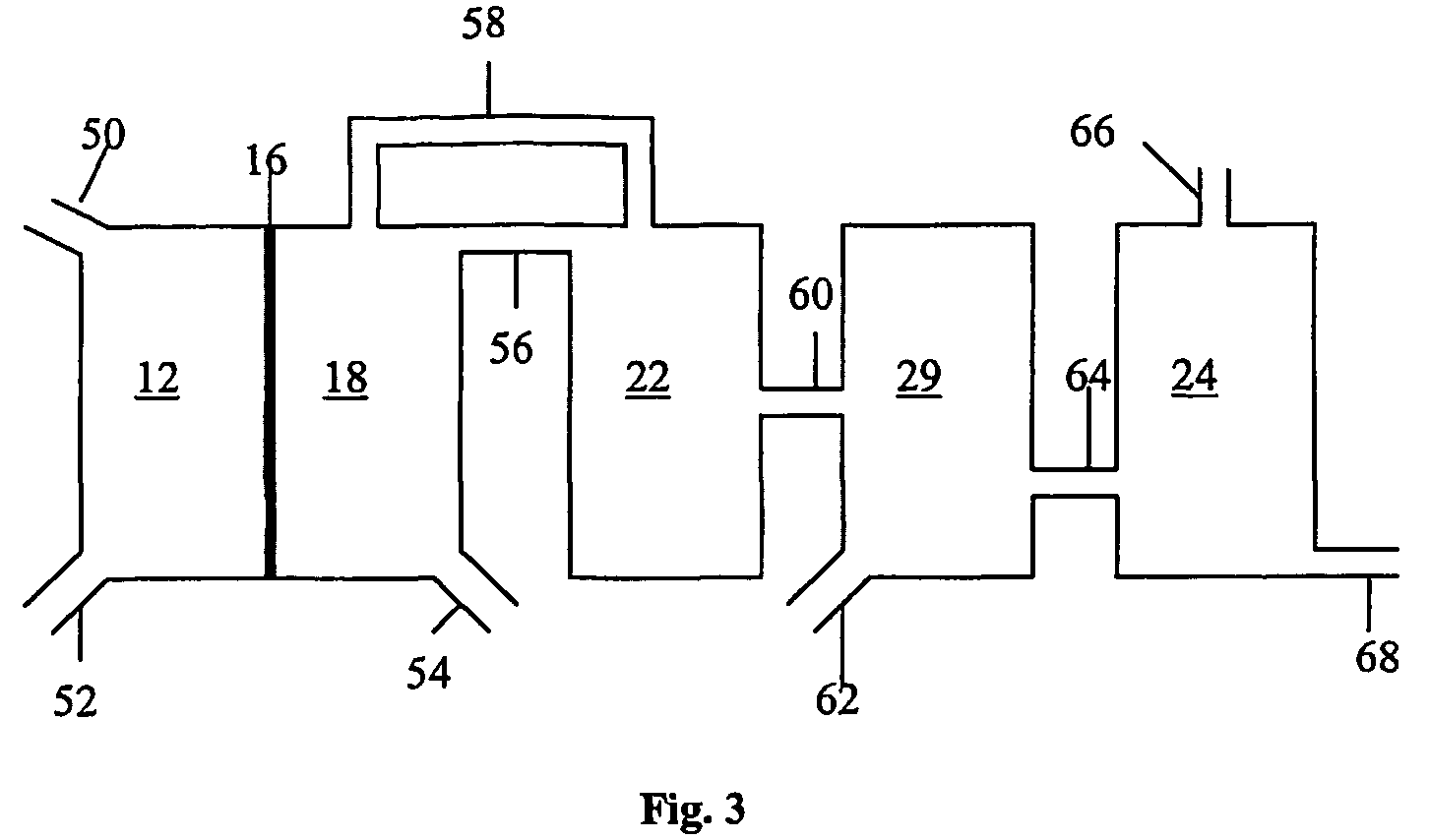Osmotic desalination process
a desalination process and osmosis technology, applied in the direction of solvent extraction, separation process, filtration separation, etc., can solve the problems of high water production cost, adverse environmental effects, high cost of widely used desalination methods, etc., and achieve high solvent yield and high yield
- Summary
- Abstract
- Description
- Claims
- Application Information
AI Technical Summary
Benefits of technology
Problems solved by technology
Method used
Image
Examples
Embodiment Construction
[0026]The invention is generally directed to a method and apparatus for desalination. The method of the invention is shown and described with reference to FIGS. 1 and 2. The apparatus is shown and described with reference to FIG. 3. Throughout the description like reference numerals are used in all the figures to describe like features.
[0027]FIG. 1 shows an overview diagram of a forward osmotic desalination method in accordance with the invention, the details of which will then be described with reference to FIG. 2. As shown in FIG. 1, the solution, for example, seawater, brackish water, wastewater, contaminated water or other solution, referred to as the first solution is disposed in a first chamber (12), as illustrated by reference numeral (10). First chamber (12) is in fluid communication with a semi-permeable membrane (16) as illustrated by arrow (13). A second solution having a concentration greater than the first solution is contained in second chamber (18). The higher concent...
PUM
| Property | Measurement | Unit |
|---|---|---|
| temperatures | aaaaa | aaaaa |
| temperature | aaaaa | aaaaa |
| temperature | aaaaa | aaaaa |
Abstract
Description
Claims
Application Information
 Login to View More
Login to View More - R&D
- Intellectual Property
- Life Sciences
- Materials
- Tech Scout
- Unparalleled Data Quality
- Higher Quality Content
- 60% Fewer Hallucinations
Browse by: Latest US Patents, China's latest patents, Technical Efficacy Thesaurus, Application Domain, Technology Topic, Popular Technical Reports.
© 2025 PatSnap. All rights reserved.Legal|Privacy policy|Modern Slavery Act Transparency Statement|Sitemap|About US| Contact US: help@patsnap.com



